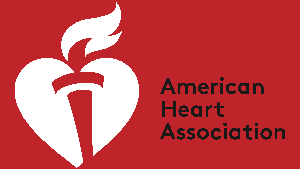There is probably no one in the country who hasn’t seen the video of the Buffalo Bills’ #3 Damar Hamlin collapse on the football field after an especially hard hit. According to the AHA, in celebration of his life being saved by CPR, Hamlin is challenging everyone to take three quick, easy steps to turn more people into lifesavers. He is working with the AHA on the #3forHeart CPR Challenge. The steps are:
- Learn Hands-Only CPR – which you can do by going to heart.org/3 and watching a 60-second video.
- Donate to the AHA to fund CPR education and training, other lifesaving programs and scientific research.
- Post on social media that you’ve taken the #3forHeart CPR Challenge and tag three friends, encouraging them to join the challenge.
The AHA already was planning to spend February spotlighting CPR. Then, on Jan. 2, Hamlin went into cardiac arrest in the most public of places: a Monday night game on a pro football field.
The AHA explained that the response was textbook – Hamlin received immediate high-quality CPR from Bills assistant athletic trainer Denny Kellington and he had his heart restarted by a defibrillator within minutes.
More than 350,000 people per year go into cardiac arrest while going about their daily lives. Fewer than 10% survive, mainly because so few are given CPR and have access to a defibrillator or AED.
given CPR and have access to a defibrillator or AED.
Those who do receive immediate CPR are twice or even three times as likely to survive.
Here’s why. Cardiac arrest is an outage of the heart’s electrical system. Without power, the person’s heart isn’t beating. That means it’s not pumping blood to the rest of their body. And that means their brain and other organs aren’t receiving oxygen. By giving them chest compressions, you are mimicking the beating of their heart, thus keeping their blood flowing. Using an AED can restore the power.
“CPR saved my life earlier this year on the field,” Hamlin said in an Instagram video. “And CPR could easily save your life or someone you love.”
The lifesaving sequence begins with recognizing that an adult or teen isn’t breathing.
Step 1 is to call 911.
To avoid the risk of everyone thinking that someone else will do it, pick a certain person to do it and call out to them by name. If you’re with strangers, be specific: “Hey, you in the Buffalo Bills hat – call 911!”
If you’re alone, dial 911 then turn on speakerphone so you can begin …
Step 2: Hands-Only CPR.
As the name implies, Hands-Only requires using only your hands. No mouth-to-mouth breathing. All it takes to do Hands-Only CPR is to push hard and fast on the center of a person’s chest.
Try to push at least two inches deep. It’s hard to measure, so remember that it’s better to push too hard than too soft. To be blunt, too hard might break ribs; too soft can be fatal.
How fast? At least 100 times per minute. However, the easy-to-remember answer is to pump along with the beat of a song with that kind of rhythm. Conveniently, many songs do, including many with apt titles, such as “Stayin’ Alive” by the Bee Gees. Check out the 58 options on our Don’t Drop The Beat playlist. Pick the one you’re most likely to remember in the heat of the moment.
Watch a video, take a course or practice on a manikin or at a CPR training kiosk found in many airports. Those steps will make you better prepared to save a life than simply reading this article.
However, even by reading this far, you’ve already learned enough to make a difference.
That leads to another vital message: Be willing to act. Being blunt again, your willingness to try really could be the difference between life and death.
“Every day I’m amazed that my experiences could encourage so many others across the country and even across the world – encourage to pray, encourage to spread love and encourage to keep fighting no matter the circumstances,” Hamlin said during the NFL Honors ceremony.
Source: www.heart.org


